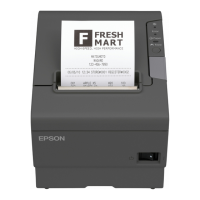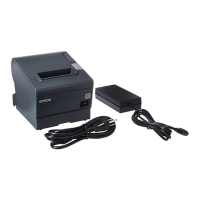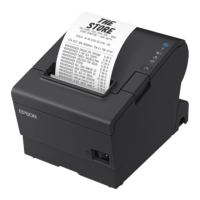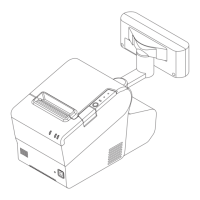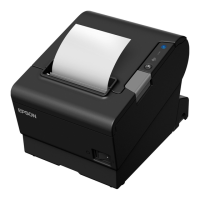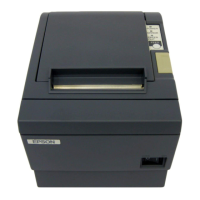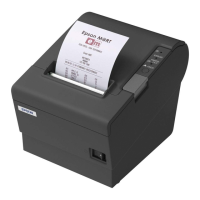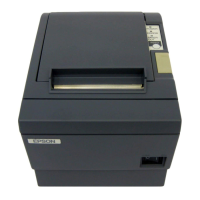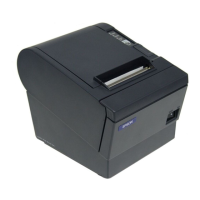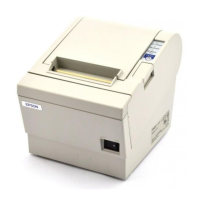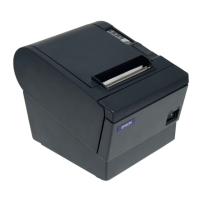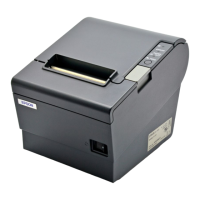129
Appendix
Functions of each connector pin
XON/XOFF
When XON/XOFF control is selected, the printer transmits the XON or XOFF signals as follows. The
transmission timing of XON/XOFF differs, depending on the setting of DIP switch 2-1.
Pin no. Signal name Signal direction Function
1FG — Frame ground
2 TXD Output Transmission data
3 RXD Input Reception data
4 RTS Output Equivalent to DTR signal (pin 20)
6 DSR Input This signal indicates whether the host computer can receive
data.
SPACE indicates that the host computer can receive data.
MARK indicates that the host computer cannot receive data.
When DTR/DSR control is selected, the printer transmits data
after confirming this signal (except if transmitted using some
ESC/POS commands).
When XON/XOFF control is selected, the printer does not
check this signal.
Changing DIP switch 2-7 lets this signal be used as a printer
reset signal.
When you use this signal as the printer’s reset signal, the
printer is reset when the signal remains MARK for a pulse
width of 1 ms or more.
7 SG — Signal ground
20 DTR Output 1) When DTR/DSR control is selected, this signal indicates
whether the printer is BUSY.
SPACE status
Indicates that the printer is ready to receive data.
MARK status
Indicates that the printer is BUSY. Set BUSY conditions with
DIP switch 2-1.
2) When XON/XOFF control is selected, the signal indicates
that the printer is properly connected and ready to receive
data from the host. The signal is always SPACE, except in the
following cases:
During the period from when power is turned on to when
the printer is ready to receive data.
During the self-test.
25 INT Input Changing DIP switch 2-8 enables this signal to be used as a
reset signal for the printer. The printer is reset if the signal
remains at SPACE for a pulse width of 1 ms or more.
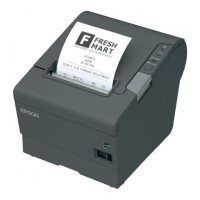
